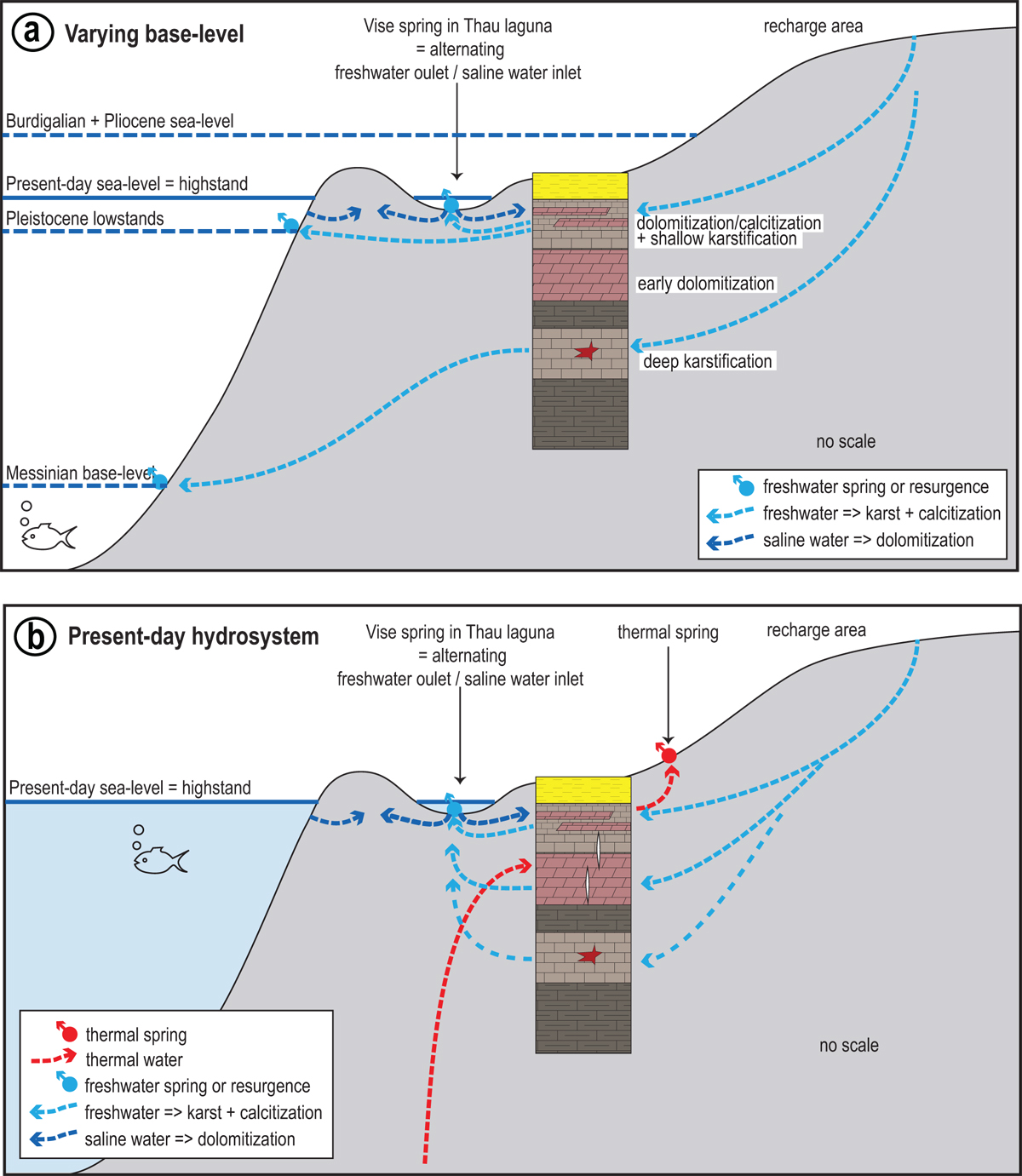Fig. 15

Download original image
a: conceptual model of alternating fresh and saline water circulation in the upper reservoir, responsible for successive episodes of dolomitization and calcitization of the carbonates. The lithological section in the centre corresponds to the studied borehole (same color code as for Fig. 3). Alternance of water circulation through the Vise spring in the Thau laguna and in the underlying reservoir could be tuned to the “inversac” phenomenon or (more likely), to longer period processes such as glacio-eustacy during Pleistocene, or regional tectonically-driven sea-level changes. See text for explanations; b: present-day setting of the Balaruc hydrosystem in relation with the architecture of the reservoir. The karstic waters circulate preferentially in the upper reservoir and through subvertical open crack in the dolomite reservoir; minor flows are recorded in the very deep reservoir. Upward flow of thermal water circulates across the dolomite reservoir through the same subvertical cracks and reaches surface level at natural thermal springs.
Les statistiques affichées correspondent au cumul d'une part des vues des résumés de l'article et d'autre part des vues et téléchargements de l'article plein-texte (PDF, Full-HTML, ePub... selon les formats disponibles) sur la platefome Vision4Press.
Les statistiques sont disponibles avec un délai de 48 à 96 heures et sont mises à jour quotidiennement en semaine.
Le chargement des statistiques peut être long.




